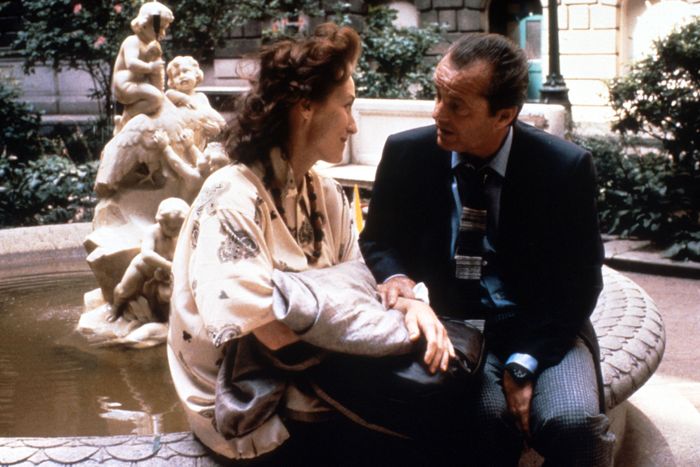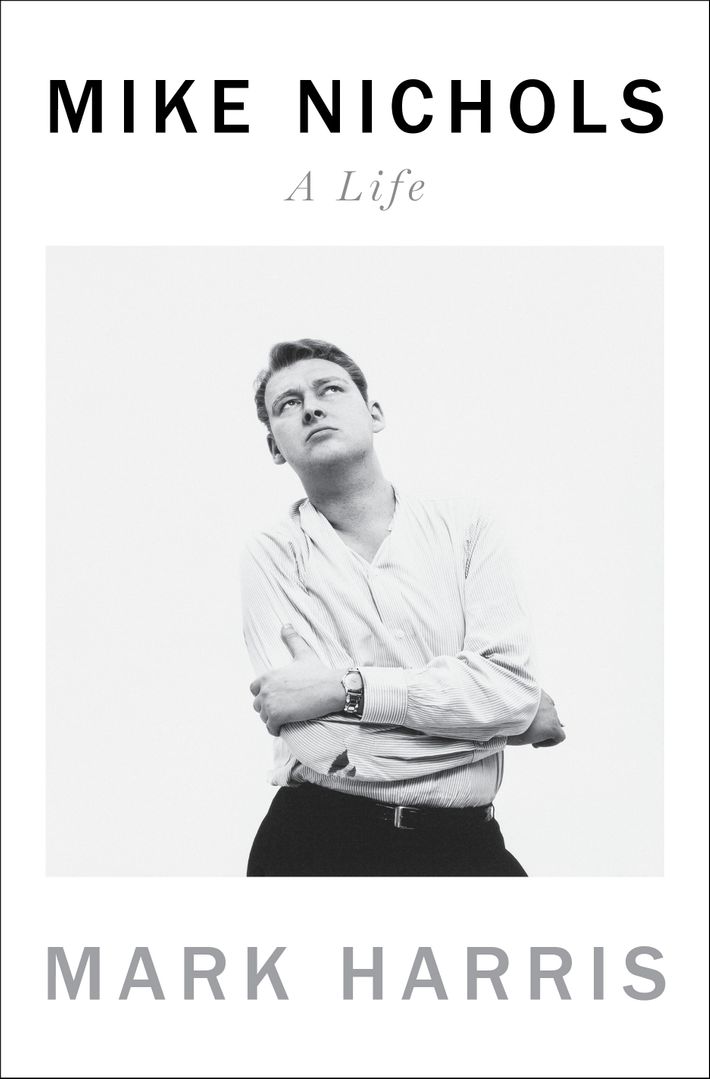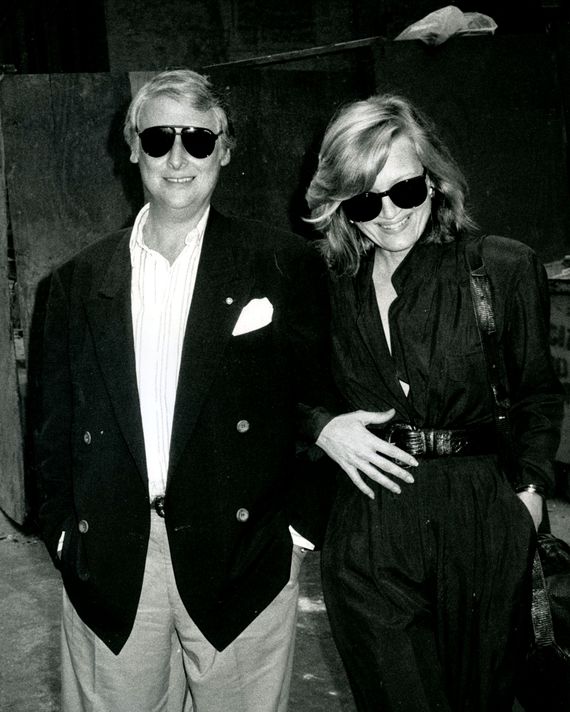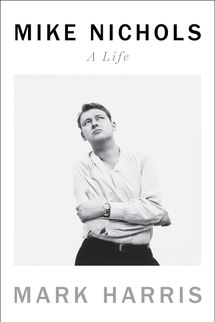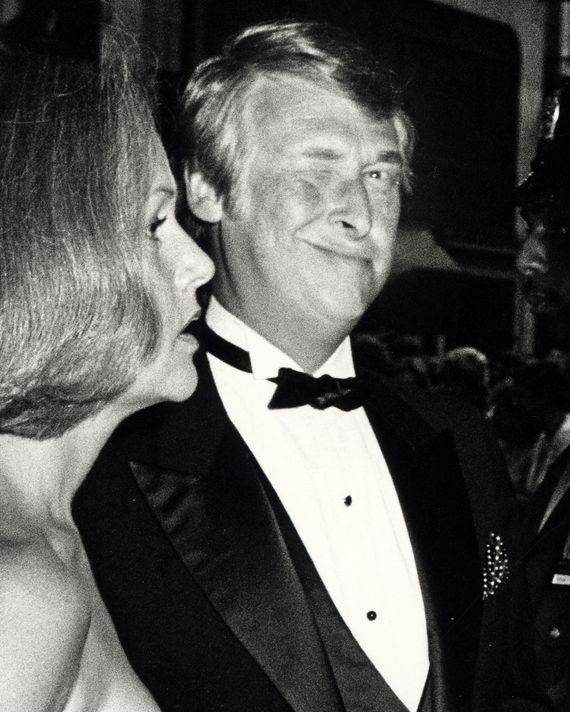
Nora Ephron first got to know Mike Nichols in 1969 when she was assigned by The New York Times Magazine to visit the set of Catch-22. Nichols, shooting in Mexico, had been given carte blanche to burn through money on what turned out to be an immensely complex and vexed production. Ephron, a decade younger, was not yet a famous screenwriter but, according to her Times bio, “a freelance writer specializing in popular culture.” She wrote:
“Whether Catch-22 will be a masterpiece, merely a very funny film, or the first failure for Mike Nichols after two smash hit movies (The Graduate and Who’s Afraid of Virginia Woolf?) and seven hit plays (among them The Odd Couple, Luv, and Plaza Suite) is at this point almost an irrelevant question for the actors in it. What matters is that the film is a chance to work with Nichols, who, at 37, is the most successful director in America and probably the most popular actors’ director in the world. Says Orson Welles: ‘Nobody’s in his league with actors.’ What’s more, he is the first American director since Welles made Citizen Kane in 1941 to have complete creative control over his final product — including the contractual right of final cut and the option of not showing his rushes to studio executives.”
Nichols rose to fame in the 1960s, first as half of a pathbreaking comedy team alongside Elaine May and then as a wunderkind director who helped chart a new course for American filmmaking and whose Broadway streak was unrivaled. In the two decades that followed, his life and career had no shortage of ups and downs, including a plunge that drove him out of the movie business for more than seven years. But by the mid-1980s, Nichols was on the rise again. His 1983 film, Silkwood — the screenplay for which was co-written by Ephron — returned him to Hollywood’s good graces, won him a third Oscar nomination, and sparked what would become a lifelong professional collaboration with Meryl Streep. And on Broadway, he had just mounted Tom Stoppard’s The Real Thing, David Rabe’s Hurlyburly, and the one-woman show that made Whoopi Goldberg a star.
His next project, an adaptation of Heartburn, Ephron’s acidly funny, revenge-served cold roman à clef about her breakup with Carl Bernstein, offered him an appealing chance to reunite with Streep and Ephron. Making the film, which was so much about his friends and their crises, seemed to throw him into a crisis too. In the next couple of years — despite his accomplishments, his accolades, his many friends, his being so psychologically astute — everything he had built would nearly come crashing down.
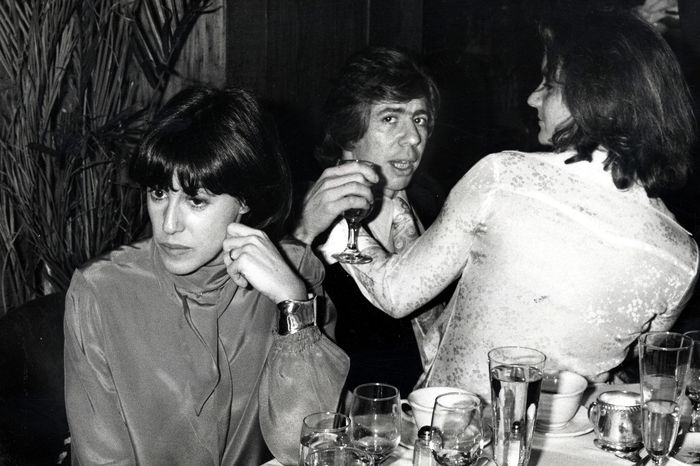
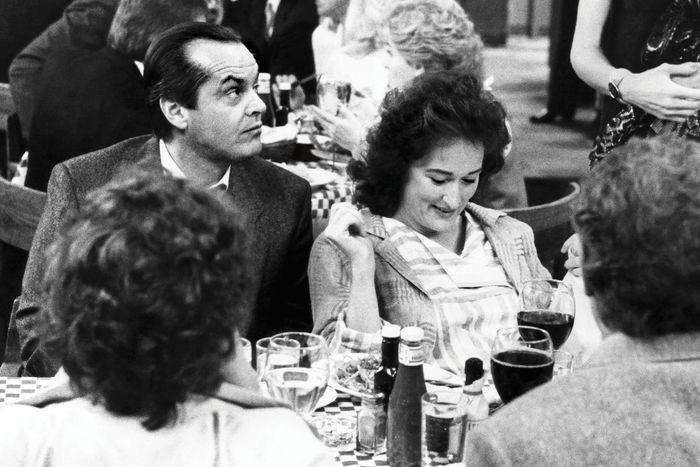
Ephron possessed every quality Nichols loved in the people closest to him — wit, intellectual fluency, strong-mindedness. She was a Jewish mother whose own Jewish mother had been as formidable and complex as his. When Ephron died, in 2012, he asked, unironically, “Who will tell all of us what we should do?” As for Ephron, she had once said on a talk show that the only way she could fantasize about infidelity was “to kill my husband for a couple of minutes — and then I get to marry Mike Nichols.”
“They had their own language,” wrote her friend Richard Cohen, “a matter of nods and frowns and common cultural references. They knew whose marriage was a sham and who could not act and who had a bad drug problem. They knew the business of movies and the business of theater and, because they were hyperventilating readers, the business of books and magazines. And they had words, a torrent of them.” So it was natural that she would entrust him with Heartburn.
Reaction to the novel, which had come out in the spring of 1983, had been explosive. The first-person story of Rachel Samstat, a Jewish cookbook author whose second marriage ends when she discovers, while seven months pregnant, the infidelity of her husband, Mark, was manifestly Ephron’s own, told in her intimate and cutting voice and even punctuated by her recipes, and she barely bothered to pretend otherwise. Heartburn mixed real people — including a warm reference to Elaine May — with barely disguised versions of Ephron’s friends, colleagues, and nemeses. When it was published, the New York Times called it “a tough, funny, bitchy and sometimes touching report from the scene of the disaster in the form of a novel.” Some critics, particularly men, excoriated it as the work of “an effective self-publicizer”; in Vanity Fair, Leon Wieseltier, hiding behind the pseudonym Tristan Vox, went so far as to call the prospect of a movie “child abuse,” claiming that Bernstein’s misdeeds were nothing compared with “the infidelity of a mother toward her children” in writing about them. But the outrage of those who felt repelled — or perhaps menaced — by Heartburn only helped speed it to the best-seller list.
Bernstein was livid about being transformed from the hero of Watergate into the bad guy — a man so horny he was “capable of having sex with a venetian blind” — in what he called “a national soap opera.” At first, his public stance was calculated stoicism: “I’ve always known that Nora writes about everything that happens in her life,” he said. “The book is just like her — it’s very clever.” But when he learned that Heartburn was to become a movie, he went to war, calling the novel “nasty … smarmy … prurient” and complaining that it “obliterates everybody’s dignity.” “I should have had no reason to be surprised,” he said, “but … your marriage, particularly your children, ought to be something you keep for yourself. When you give away what you sing to your infant child in the nursery … you give away your soul!”
He took Ephron to court, and their battle resulted in one of the most unusual celebrity-divorce agreements in history. Bernstein won the right to read all drafts of the screenplay and see and submit notes on an early cut of the film, extracted a pledge that Ephron would never turn Heartburn into a TV series, mandated that a trust for their two young sons be created with part of the film’s profits, and won her guarantee that “the father in the movie Heartburn will be portrayed at all times as a caring, loving, and conscientious father in any screenplay prepared or executed with my name attached to it.” Nichols himself was a signatory to the final settlement.
Nichols did not view Heartburn as an act of betrayal but as a response to one. He was moved by the way Ephron had turned a crushing emotional blow into a statement of survival, and he initially saw it as a movie about “a woman doomed to be right, and therefore alone.”
“I can’t believe you’re going to do this,” Bernstein said to him when they met at the Russian Tea Room to discuss the film. “Particularly since, more than anybody I know, you’re a person who cherishes his privacy and that of your children.”
“Somebody is going to make this movie,” Nichols told him, “and you’re much better off if I make it, because I’m your friend.”
Streep, who had signed on to play Rachel, insisted that the movie be treated as fiction; she wanted to star in an emotional comedy about a contemporary woman’s life, not a tell-all drama. “Mike, at that time, was a romantic and a total womanizer,” says Heartburn’s producer, Robert Greenhut. “But what he felt for Streep was love and respect. He listened to her.”
Originally Nichols cast Mandy Patinkin, who had won two Tonys and was beginning to get noticed by Hollywood, as Bernstein. Patinkin was earnest, he was emotional, he was Jewish; he was also, in the memories of those who worked on Heartburn, a lot to handle. “Mandy was at the top of his game,” says Juliet Taylor, the film’s casting director. “But when he came in to read with people, we got to a point where he sings” — Mark exuberantly breaks into “Soliloquy,” from Carousel, when Rachel tells him she’s pregnant — “and he sang it. The whole song. Every single verse. We were all just dying and thinking, Oh, he is going to be so high-maintenance.”
During Heartburn’s two weeks of rehearsal, Nichols started to worry. Many of Patinkin’s questions seemed to emanate from his skepticism about the bad behavior of his character. “Mandy would constantly say, ‘I don’t know. I don’t understand. Would a guy really do this? Would a man really cheat on his wife while she was pregnant?’ ” says Richard Masur, who played one of Rachel’s friends. He and Nichols, who was then on his rocky third marriage, “found ourselves talking about our own lives and saying, ‘Yes, men do terrible things!’ [Mandy] never got it. I think, on some level, he wanted his character to be the hero of the movie, or at least to be softer and more likable.”
Streep wasn’t worried. “Mandy’s a questioner, right?” she says. “That’s the way he was the very first time we worked together, in Trelawny of the ‘Wells,’ ” the play in which she made her Broadway debut in 1975. “He’s a rabbinical actor. He wears everyone down with questions, and that’s how he solves the mystery of the thing for himself.”
But by July 19, 1985, the first day of production, Nichols had begun to convince himself that he had made a mistake. In Heartburn, Rachel has to fall in love with Mark, marry him, go into a tailspin when she discovers his betrayal, leave, reconcile with him, realize she was right the first time, and leave again. For the movie to work, Mark would have to be alternately seductive and contrite, gentle and loutish, imploring and impatient, someone she could love, hate, and need.
They shot for five days. Both actors “thought everything was hunky-dory,” says Greenhut. But soon after filming a restaurant scene, Nichols told him, “ ‘This is not happening. I think we should try and replace Mandy.’ He couldn’t even articulate what it was, except that there was no real excitement in the relationship. He asked me to give Mandy the bad news, and I said, ‘I really think you should be the one carrying the water on that,’ ” Greenhut says. “We sat in my car — I had one of the first car phones. I said, ‘You call him, and I’ll sit here and hold your hand or whatever.’ It was a very emotional experience for both of them. I sat next to Mike, and I could hear Mandy gasp on the other end.”
Streep was stunned. Nichols had not told her of his decision, and, she says, “I never really understood it. He just took a dislike. Mandy was wonderful, and it was so early in the shoot. I did say to Mike, ‘I think it’s a bad idea.’ And it was so sudden! Just like shaking an Etch A Sketch, and he was gone.” Patinkin later faulted himself for listening “to all the relatives who said, ‘Yes, you win Tony Awards, but how’s the movie career going?’ ” and said that he was “ambivalent” about the role and believed that Nichols had always wanted another actor. But he was devastated.
“I’ve felt awful about it all my life,” Nichols said. “But on film, I couldn’t see the chemistry I wanted. I had to move fast.” Unless he could get a new co-star for Streep on a moment’s notice, the production would shut down. He reached out to Kevin Kline, who was Streep’s friend and had worked well with her in Sophie’s Choice, but Kline wasn’t interested; “I liked the book,” he said, “but when I read the screenplay, the character just seemed like a jerk.” Nichols then called his Carnal Knowledge (1971) star Jack Nicholson, who agreed to step in immediately — for $5 million, which was about $5 million more than Paramount had been paying Patinkin. “When I called him,” said Nichols, “the first thing he said to me was, ‘If you need me, Nick, I can be there in two days.’ Then comes the bill, and it’s very high, but that’s also part of ‘If you need me.’ ” The studio did some quick calculus about whether Nicholson’s drawing power was worth what would amount to a substantial increase in Heartburn’s sub–$20 million budget and approved his hiring.
Both Streep and Ephron worried that Nicholson’s arrival would throw Heartburn out of balance. Patinkin had been striving, needy, serious; Nicholson — nobody’s idea of Jewish — was sly, confident, and indefatigably charming. “Now everyone will like him, that son of a bitch,” Ephron fretted.
“Suddenly, there were a lot of ideas about how we were going to enhance the part,” says Streep. “The man’s part. This was a movie about a woman, which was even more unusual in those days than it is now. It was a unique opportunity to explore things from her perspective, from Nora’s perspective.” Nicholson’s hiring “was the first time in my life that I got mad at Mike. Jack Nicholson was a movie star, and it was intimidating to have him come in, and maybe a little piece of that made me go, ‘Hey, don’t lose me in this just because you bring your friend in,’ ” says Streep. “I went to Mike and said, ‘This movie is about the person who got hit by the bus. It’s not about the bus.’ He heard me — he really did hear me on that. And all the nonsense about new scenes stopped.”
Nicholson himself turned out to be nervous. He and Streep had never met, and there was no prep time before their first scene. Nichols decided to use their awkwardness to the film’s advantage by starting with a scene in which Mark and Rachel uneasily attempt a step toward reconciliation while remaining unsure of how to deal with each other. “If you look at the movie, Meryl’s doing that thing that girls do,” he said. “She’s blotchy — parts of her face are blushing. The thrill of them with each other, and us with them together, is sort of what made the joy of that movie.” For the first time, he started to take pleasure in the shoot. “It became clear to me that it was at least alive,” he said. He no longer felt that Heartburn was about a woman doomed to be alone but about the struggle, even if unsuccessful, to connect. “I think maybe my subject is the relationships between men and women, without much of anything else, centered on a bed, ” he said at the time. “I don’t know how to narrow it down any more.”
Streep and Nicholson’s breakthrough came in a sequence in which Mark and Rachel eat takeout and chat aimlessly while sitting on their bed in the house they’ve just moved into. Nichols suggested they eat pizza; Streep proposed that they serve it with a trowel because their kitchen utensils would probably still be packed. She and Nicholson started trying to remember lyrics to old songs, singing with their mouths full, recalling snatches of melodies, getting them wrong, moving on to something else. In just one take, Nichols captured the kind of private throwaway moment in a married couple’s life that almost never makes it into movies.
He was glad to work with Nicholson again, but like Silkwood, Heartburn was a set on which his most significant collaborators were women: costume designer Ann Roth, Carly Simon (whom he hired to write the score), Streep, and Ephron. “Nora was always there,” says Streep. “He and she were the Gang of Two. And often they didn’t even have to say much — there was so much between them that was understood.” Nicholson couldn’t have been happier. “He didn’t know how to talk to men unless you were talking about sports or something he was interested in,” says Masur. “But with women, he was engaged, connected, funny. In the wedding scene, he was wonderful with the little girls — he would listen to every word they said — charming to the old ladies. I said to Mike, ‘What do you think that comes from?,’ and Mike said, ‘That’s what happens when you grow up with two mothers. He didn’t have a father to kill.’ ”
Streep trusted Nichols so completely that she allowed her daughter Mamie, then just 2, to appear in several scenes as Rachel’s toddler. Nichols delightedly left much of their interaction in the movie, whether Mamie is pulling her mother’s glasses off her face or climbing a flight of stairs to an airplane one deliberate step at a time as his camera watches patiently and insists that the audience do the same. Their scenes in Heartburn were the first he ever shot with a father’s eye.
To fill in her own performance, Streep watched Ephron every day. “It wasn’t like trying to play Margaret Thatcher or something,” she says, “but there were parts of her essence that were important to me. Nora was a tough girl, but she was also girlie, and she had certain fey mannerisms that I wanted to capture.”
For Nichols, the making of Heartburn became a more personal experience than he had expected, sometimes uncomfortably so. The cast was full of people he knew — Maureen Stapleton, Stockard Channing, Cynthia O’Neal, Milos Forman. And for the first time, he was depicting his own milieu — a world of casual socializing among successful urbanites, of dinner parties and receptions and tense drives home, of prewar co-ops and expensive renovations, and of friends who gossip about one another’s secrets. More painfully, he was trying to do justice to the plight of a woman with two young children who realizes that her husband will never become the man she needs him to be. At the time, Nichols’s own marriage, to Annabel Davis-Goff, was in decline, and he brought a bitter force to the scenes in which Rachel attempts to continue with Mark but realizes she will never trust him.
With Streep, he was true to his word: Heartburn’s visual showpiece is the scene in which the film announces that it is indeed about the woman who was hit by the bus — a two-minute slow push toward Rachel’s face as she sits in a salon and overhears a conversation that makes her realize her husband has been cheating on her. The only major scenes he cut after shooting them were a couple of fantasies in which Rachel gets to step away from what she’s facing. Although the film remained a comedy, Nichols wanted it to carry a sting that audiences wouldn’t fully feel until the end. In most of his movies, he had embedded a thematic statement somewhere in the first five minutes. In Heartburn, he saved it for one of the last scenes, when Rachel’s friend says to her, “Don’t give me that New York psychological bullshit about how people are capable of change. They are not.”
The lyrics Simon wrote for the film’s main theme — “I know nothing stays the same / But if you’re willing to play the game / It’s coming around again” — offer more hope than that, but only in the wake of loss and disillusionment. Simon consulted closely with Nicholson and Ephron about the lyrics; he chose to thread the song through the film, something he had not done since The Graduate.
Nichols finished the movie in October, not quite sure what he had shot or what life he was going back to. He had been spending more nights and weekends at the Carlyle hotel, often preparing for the coming week’s work late into Sunday night. During one of those sessions, when Greenhut was working with Nichols, 60 Minutes came on TV in the background. Nichols lifted his head from the shooting schedule, looked at Diane Sawyer, and said, “Wow. How can I get to meet her?”
“You’re a famous guy,” Greenhut told him. “I’m sure you can figure it out.”
After Heartburn was finished, but several months before it was to be released, Nichols suffered a mild heart attack while directing a rehearsal for the Broadway play Social Security. He was briefly hospitalized. What followed was, he said, “the year I went crazy.”
It took months for the people who knew Nichols to realize that he was having a nervous breakdown. The personality they knew — the humor, the energy, the optimism, the sociability — fell away from him layer by layer until what was left was a stranger: a gaunt, paranoid, desperate man whose life appeared to be in grave and immediate peril. As early as the spring of 1986, he seemed off-balance, but there were plenty of explanations: He had lost his mother and suffered a heart attack, two reminders of mortality that everyone knew could shake a man in his mid-50s, especially one who had been as careless about his health as Nichols. A degree of emotional unsteadiness was only natural.
To his friends, Nichols did not seem shaken when Social Security received mixed reviews, many of which dismissed the play as a sitcom and questioned why, at this point in his career, he would want to work so hard to “polish up this tinsel until it glitters like fool’s gold.” He could take that — it wasn’t the first time that John Simon had called him “a genius of the second-rate” or that Frank Rich had said he wasn’t “in top form,” and in any case, the play looked like it was going to become a mild hit even without raves.
But the pending reception of Heartburn felt more ominous. The first edit had gotten the most tepid possible endorsement from Bernstein, who insisted that the movie was “a silly little story about two people who fucked up” but conceded that it “come[s] quite close to the truth of what really happened in the marriage.” For the first time in his career, Nichols had no idea how critics or audiences would respond to a movie he had made. His own feelings had shifted from optimism to discouragement and back so many times that he didn’t quite know where, or if, he had finally landed.
Soon after Social Security opened, he started screening Heartburn for his friends and colleagues; Paul Simon agreed to host one of the showings. Nichols’s list of invitees was, he later said, “a cruel, harsh audience that has never liked anything I’ve done nearly as much as the public or, dare I say, the critics. I call this audience ‘the Dwarf’ because the Roman conquerors, during the triumphal processions, kept a dwarf on their shoulders to whisper, ‘Fame is fleeting, and life is short.’ ” At that point, Nichols didn’t need any reminders; the audience at Simon’s screening had watched Heartburn indifferently and had not bothered to hide their coolness toward it. To some, it even felt like an act of betrayal akin to Truman Capote’s long-awaited novel Answered Prayers; Nichols had been invited into their world, had pried into their marriages and divorces, and had exploited what should have remained behind closed doors.
“The first screening of any picture is awful because the film changes in your mind from the greatest picture ever made to a perfectly nice picture that needs a lot of work,” Nichols said. “Then you always have that depressed night, and you get … a lot of calls from friends who think the picture would be fine if only you cut a particular scene. It’s hard to forget what everybody said and go back and cut the picture right.”
That night, he was rattled. “There was a dinner afterward,” recalls Tracey Jackson, a young woman with whom Nichols had become friendly and occasionally flirtatious. “It was clear it hadn’t gone well, and nobody wanted to talk about the movie. Afterward, we were crossing Central Park, and he said, ‘You know, people think that because I’m Mike Nichols, I don’t need praise. I need a lot. Nobody gets that.’ He just seemed so bereft and alone, more than I had ever seen.”
When Heartburn opened in July, a more widespread negative verdict came in. “There must be a side to Carl Bernstein’s behavior of which we have not been made aware either in the book or the movie,” Andrew Sarris wrote, complaining in The Village Voice about the “one-sided sympathy” the film extends to Rachel. In Time, Richard Corliss sighed over the “tunnel-vision point of view of the offended party.” Roger Ebert shrugged and said, “There’s not much in the marriage for him to betray,” noting that Streep seemed “dowdy and querulous,” and Newsweek was certain that Ephron had left out important information about Rachel that would explain why Mark slept with other women, asking, “Is he disgusted by Rachel’s pregnant body? Tired of her cuddly, smart-homebody personality?” Almost every male critic who disliked the movie expressed bafflement that Nichols would take on a subject as minor as domestic unhappiness from a woman’s point of view — “He’s no dum-dum,” wrote Stanley Kauffmann, wondering why he would “waste [his talent] on flimsy material.” The good reviews for the film — and there were several — could not overcome a general perception that Nichols had blown it by making a trifle of a “woman’s picture,” and Heartburn’s box-office performance (it opened in second place but grossed only about $25 million during its run) confirmed it as a failure.
By then, Nichols was in far worse shape than he had been — too emotionally unsteady to do more than the bare minimum of press and spiraling ever further into what had at first seemed to be a severe depression but was starting to look more like psychosis. He had always worried about money, particularly when it stopped flowing. With My One and Only, The Real Thing, Hurlyburly, and Whoopi Goldberg’s show all having reached the natural conclusions of their successful runs, he was now in a dry period, and Nichols, who enjoyed acquiring and breeding show horses, an expensive habit, had overextended himself in the horse market.
But none of that explained why he was suddenly talking to everyone he knew about his certainty that he was headed for destitution and his terror that his and Davis-Goff’s children, Jenny and Max, then just 9 and 13, would be left to starve. The fear grew into an obsession, and his friends became used to disoriented calls late at night, when Nichols, alone in his suite at the Carlyle — he and Davis-Goff were now spending a lot of time apart — would become overwhelmed with terror and reach out with mad questions or requests.
One night, he called Tom Stoppard and said, “Could I come and live with you? Will you take care of me?” On another, he called Stephen Sondheim. “He went on and on about how he was going broke,” says Sondheim, “and how there would be no money to educate his kids. I thought, What am I hearing? Mike is having some kind of paranoid break. I didn’t tell anybody because I didn’t know who I would tell. I just said, ‘Mike, I think, I really think … are you seeing a psychiatrist?’ He said, ‘Oh, yeah, yeah.’ I thought it was just his usual strangeness about money. One evening … he had said to me in a sort of semi-drunken phone call that one of his biggest regrets in life was that he wasn’t a millionaire. In those days, millionaire meant billionaire. And I thought, Wow. I knew he liked money and luxury goods and living high. But that he was upset at 11:30 in the evening, when he’d had a lot of brandy, that he wasn’t a millionaire? I had nothing helpful to say, and I sure didn’t want to go to friends and say, ‘What am I going to do about Mike?’ ”
But it was a question people who knew Nichols were starting to ask. Some took him at his word, as irrational as he sounded. “He called me one night and said, ‘A terrible thing has happened. I’ve lost all my money, and I have nothing,’ ” Streep recalls. “I said, ‘Well, Mike, you have so many rich friends — everybody’s going to lend you money.’ I was shocked, because it wasn’t a kind of conversation that we would ever have — it was so out of the blue and disconcerting. I thought, Something’s wrong with him, but I didn’t know what.”
By the mid-1980s, cocaine was so ubiquitous in Nichols’s professional circles that its use barely raised an eyebrow. It was on movie sets and in rehearsal rooms, in galleries, nightclubs, and newsrooms, on trading floors, in restaurant bathrooms, and at weekend parties in the Hamptons, and the dividing line in his world was not between those who partook and those who abstained but between those who did it and those who overdid it. Nichols had been using cocaine regularly for some time and had been known to use crack, too. He later said his drug use had contributed to his heart attack.
But it didn’t occur to Streep, or to most people, that Nichols might have developed a drug problem. “I’m the kind of person who never knows about that,” she says. “When their nose is running all the time on the set, I give them the name of an ear-nose-and-throat specialist, and it’s always years later that I go, Oh, wow! But Carrie [Fisher] knew. She talked to him and said, ‘He’s out of his mind. He’s on drugs.’ When she said it, I thought she was imagining it because she always thought everybody was using. But she was right.”
This time, the problem wasn’t cocaine. Soon after Nichols had been released from the hospital following his heart attack, he had told his doctors that he was anxious and having trouble sleeping. One of them prescribed him Halcion, a benzodiazepine popular at the time which later fell out of favor after allegations that its side effects could include paranoia and suicidal thoughts. The pill worked for a while and then it didn’t. The more anxious he became, the more he took; the more he took, the deeper his paranoia got. Eventually, he went from one pill at night to six just to fight off the palpitations and shakes that going cold turkey would cause. “At first, I was enormously depressed,” he said. “Then I was delusional. I thought I was broke. And I made hideous mistakes.”
He started selling everything, often at cut-rate prices to the first available buyer. He fired his driver and got rid of his Mercedes. He would talk openly to friends about what would become of his children in such stark terms that some of them feared he was planning to commit suicide as soon as he felt certain he could leave behind enough money. He would compulsively go over a list of his assets. To some who knew him, Nichols seemed to be living two lives at once: He was deranged enough to ask one wealthy friend who offered to loan him money, “Can you make it $25 million?,” but rational enough to observe himself in free fall as if from a great distance. “Even when he was selling all the Monets or Manets or whatever it was,” the composer Maury Yeston says, “he was able to discuss it with great aplomb. ‘I’m selling everything, and I don’t know why,’ he would say, as if he were talking about someone else’s life crisis.”
Some of Nichols’s intimates, including Buck Henry and Candice Bergen, knew that his obsession with money, though disproportionate, was not entirely irrational. “He really did have debt,” Bergen says. “He lived like a prince.” Others, like Streep, felt that Nichols needed to hit bottom in order to justify ending his marriage to Davis-Goff. “He was so unhappy,” she says, “and he didn’t know how to get out of it without making it a crisis.” Richard Avedon thought his old friend was simply in a deep funk; he went over to the Carlyle, pulled Nichols out of bed on a cold fall day, bundled him up in a sheepskin coat, and walked him around the block, at one point pounding him on the back and yelling, “Snap out of it!”
That October, his friend Susan Forristal came to visit him in Connecticut. “Everything was coming apart at the same time,” she says, “the work, the life, the marriage. Davis-Goff called and said that he was very, very down, and why didn’t I come for the weekend to try to cheer him up? We were taking a walk, and he started telling me how awful he felt, how he wasn’t looking forward to anything. I said, ‘What are you taking to sleep?’ And he said, ‘I’m taking Halcion.’ The summer before, I had been in Amagansett with Randy Newman and Penny Marshall. Penny was saying, ‘I just want to kill myself.’ And Randy said, ‘What are you taking to sleep?’ And she said, ‘Halcion.’ And he went, ‘Exactly the same thing happened to me and my brother.’
“So I told Mike this, and he goes, ‘No, no, no, the doctor told me’ — we all had the same doctor — ‘this was fine.’ And I said, ‘I’m telling you: It’s not fine.’ So then we had the weekend. They had people over for lunch, and the kids were causing trouble, and it was just normal.”
A few weeks later, Nichols asked Forristal to come to the Carlyle. When she got there, he started asking what she described as “calm, practical” questions about the suicide of her sister. It became clear that he was trying to figure out the most painless way to take his own life. Forristal and Carly Simon, whom Nichols had also asked to come over, realized there was no time to waste. They got him dressed, hailed a taxi, and took him to Columbia-Presbyterian. The drive was slow — it was November 2, 1986, the day of the New York City Marathon — but Nichols was too exhausted to do anything but go willingly and check himself into the psych unit of the hospital. His Halcion addiction was quickly confirmed, and as he was weaned off the drug, his delusion and paranoia abated in less than two weeks.
The crisis was over, but the aftershocks were considerable. Nichols’s marriage was in ruins; Davis-Goff had stuck by him loyally until the worst had passed, without knowing if it ever would, but too much had been said and done for them to continue. (“In craziness,” he once observed, “a fair amount of truth comes out.”) Their parting was amicable. He bought an apartment in the Hotel des Artistes, on West 67th Street, four blocks from where he had grown up, where she and the children could live; he would stay across Central Park at the Carlyle. “I changed my life,” he said. “I wanted another life. And I got it.”
For the first time, Nichols started being careful — not simply cautious or strategic about professional decisions but respectful of his own fragility. “After that six months of hell, my life was very different,” he said. “Simplified.” He returned to therapy and, after decades of barely giving his heritage a thought, started to contend with some of the feelings about his Jewishness that his mother’s death in 1985 had reawakened — “the idea that all of this is borrowed time, that I should have been 6 million and one.” And he started to try to understand why his life had felt like a cyclical series of ascents and crashes. “You work better and better, and you feel okay about it, and people seem to go for it,” he said, “and then [depression] comes creeping in, and you don’t know when it started. Slowly, what you’re doing is turning into stone. You don’t notice it and then something cataclysmic happens, like a marriage breaking up, or a picture being disastrous for everyone, or getting sick. And then you think you’re through.”
A year earlier, Nichols had taken a quick trip to Europe and come back with an anecdote for all the friends and colleagues who knew about his most recent crush. “He was talking all about Diane Sawyer,” says Joanna Gleason, who was then being directed by Nichols in Social Security. “They had flown back together, and he was full of stories.”
Their meeting was an accident. Nichols had run into her in Paris as they were both waiting for the Concorde to fly back to New York. She hadn’t slept for three days — she had flown there to deal with a health emergency involving her mother — and had been trying to avoid him when he walked up and said, “You’re my hero.”
“And you’re mine,” she replied. She told Nichols what was going on; he talked about the loss of his mother and the stress of dealing with sick parents. They didn’t banter; they opened up to each other quickly, finding common ground at a vulnerable moment. “Nothing fundamental had changed,” she says. But “in the first 90 seconds, I knew he was at the center of the dance.”
Nichols was still married; Sawyer was involved with the diplomat Richard Holbrooke. She knew he had a movie coming out, and she spent some of the three-hour flight to JFK trying to wrangle him for an interview on 60 Minutes timed to the release of Heartburn. “Do you ever have lunch?” she asked as they reached New York. He said he did. They exchanged pleasantries and went their separate ways.
More than a year later, while Nichols was in Arkansas directing Biloxi Blues, the first movie he made after his recovery, he told his first assistant director, “I met a woman. Diane Sawyer. I’m going to marry her.”
Nichols had not yet shared that plan with Sawyer — he had not, in fact, spoken to her since the beginning of his crash a year earlier. After Biloxi Blues had wrapped, he returned to New York City, called her, and said, “Meet me at the Russian Tea Room.”
“She had wondered what had happened to me,” he said, “and was sort of hurt.” Nevertheless, she agreed to have lunch with him. “And then it went very, very fast,” he said.
In less than a month, they were engaged.
Today, Heartburn stands as perhaps Nichols’s most underappreciated comedy; it’s both funny and unfailingly acute about the manners and mores of the privileged class of people it depicts, and it’s also one of the few studio films of the period in which a male director subordinated himself to the perspectives of a female screenwriter and a female protagonist. (Silkwood is another.) A year after its release, Vincent Canby caught up with the film and predicted it would have a healthy afterlife in the newly popular medium of home video, calling it “an exceptionally good movie … an accumulation of tiny, wonderfully observed details [that] never for a second mistake[s] rueful, satiric comedy for something pathetic or sentimental … I can’t understand what all the carping was about.”
Excerpt adapted from Mike Nichols: A Life, by Mark Harris. Copyright © 2021 by Mark Harris. To be published by Penguin Press. Reproduced by permission of the Wylie Agency.
*This article appears in the January 18, 2021, issue of New York Magazine. Subscribe Now!


